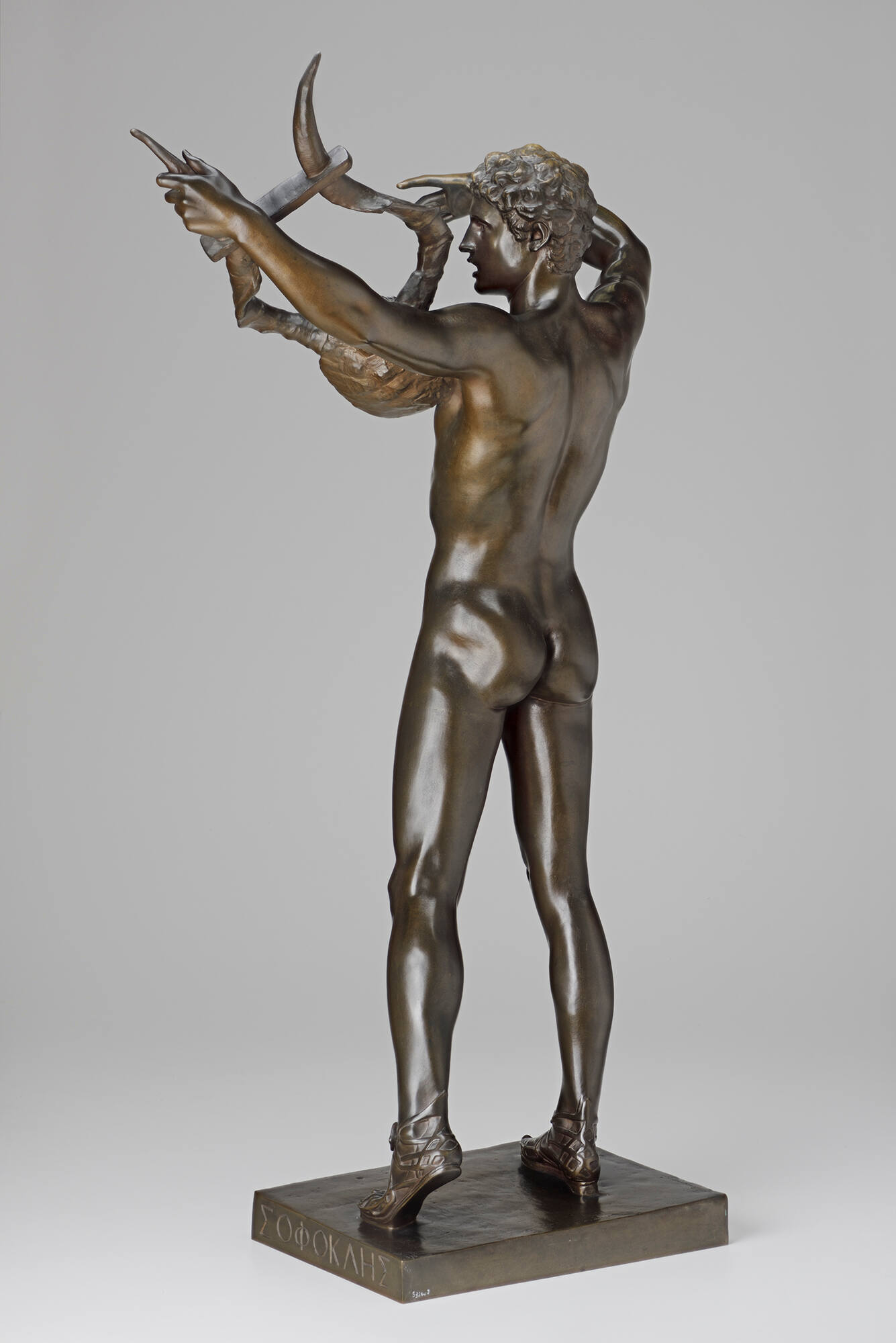 |
| John Talbott Donoghue, Young Sophocles Leading the Chorus of Victory after the Battle of Salamis (1885/cast 1911) Art Institute of Chicago, Gift of Robert Allerton |
1853 - sculptor John Talbott Donoghue born in Chicago
 |
| Chicago Inter-Ocean, Monday Morning February13, 1882 (from the Internet Archive) |
 |
| John Donoghue, Plaque of Isola Wilde |
1885 - Donoghue created Young Sophocles Leading the Chorus of Victory after the Battle of Salamis
1890 - Isabella Gardner acquired a bronze of Young Sophocles in Venice
 |
| John Talbott Donoghue, Young Sophocles Leading the Chorus of Victory after the Battle of Salamis (1890) Isabella Stewart Gardner Museum |
1893 - Young Sophocles was exhibited at the World's Columbian Exposition in Chicago. Multiple biographic posts claim that it won a first prize however it is not listed in the awards records of the Exposition at the Chicago History Museum. There are many fans of the work (Oscar Wilde, Isabella Stewart Gardner, Robert Allerton), but not everyone liked it (see review, below).
"The Young Sophocles Leading the Chorus of Victory After the Battle of Salamis," by John Donoghue, is of the French school, adapting modern treatment to studies of the antique. It is not an attractive composition, and is in more than questionable taste. True, that after the battle of Salamis he was chosen to head the chorus of boys at the celebration of that victory; but one cannot imagine the great dramatist posing as a lad nude and with a lyre in hand. Though lads went naked on such occasions, it is not the guise or attitude that one is apt to associate with this the great master of tragedy. The figure is well enough in its way, with erect and supple carriage, head thrown back, and earnest thoughtful features; but it is not suggestive of anyone in particular, and certainly not of Sophocles, either as a youth or at any other period of his life.
Also intended for the Exposition was The Genius of America. The 30-foot sculpture was shipped from Rome to Brooklyn, where, according to the Boston Herald, it sat on the docks, “a huge bill for trans-shipment confronting the artist.” Left unclaimed, it was broken to pieces by dockworkers to make room for incoming shipments.
1888 - Donoghue moved to Boston, where he exhibited his work at Horticultural Hall to great acclaim.
1903 - John Donoghue died in New York by suicide (NYTimes) and Irish Boston website
1911 - Robert Allerton gifted a casting of Young Sophocles to the Art Institute of Chicago. Allerton had spent time at the Columbian Exposition in 1893 and may have seen the sculpture there.
1917 - the Metropolitan Museum (NY) purchased a plaster cast from the Art Institute of Chicago, and ten years later, their bronze was replicated from it.
[Wikipedia states that there’s a copy of Young Sophocles at the Honolulu Museum of Art. A search of their database finds an entry for John Talbott Donoghue, though there’s no image and no metadata. It’s possible that Robert Allerton had a copy of the sculpture in his personal collection which was donated to the HMOA.]



